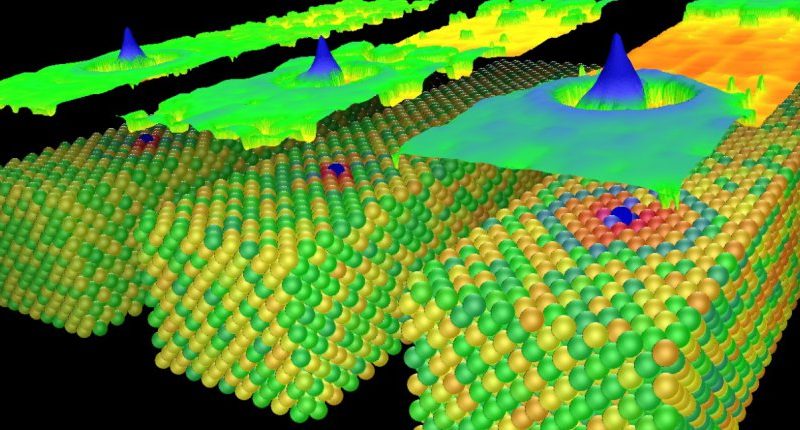Condensed Matter Physics serves as the cornerstone of modern material science, unraveling the mysteries of matter in its solid and liquid forms. From the infinitesimally small to the macroscopic scale, this field explores the behavior of atoms and molecules, paving the way for groundbreaking advancements in technology and industry.
What is Condensed Matter Physics?
Condensed Matter Physics delves into the study of matter in its condensed states, such as solids and liquids, where particles are densely packed. It investigates various phenomena, including phase transitions, electronic properties, and mechanical behaviors, contributing to our understanding of the fundamental nature of materials.
Importance of Condensed Matter Physics
The insights garnered from Condensed Matter Physics underpin a myriad of applications, ranging from semiconductor technology to medical diagnostics. By elucidating the intricate interactions between atoms and molecules, researchers can tailor materials with desired properties, revolutionizing numerous fields.
Nanostructures: Building Blocks of Modern Materials
Definition of Nanostructures
Nanostructures refer to materials or objects that exhibit dimensions on the nanometer scale, typically ranging from 1 to 100 nanometers. These structures possess unique properties arising from their small size, making them indispensable in fields like nanoelectronics, catalysis, and medicine.
Nanostructures
Nanostructures find applications across diverse domains, including:
- Nanoelectronics: Utilizing quantum effects for faster and more efficient electronic devices.
- Nanomedicine: Delivering targeted drug therapies and diagnostic imaging at the cellular level.
- Nanomaterials: Enhancing mechanical, optical, and thermal properties for advanced materials.
Understanding Bulk Materials
Definition of Bulk Materials
Bulk materials encompass substances in their macroscopic form, comprising vast quantities of atoms or molecules. Unlike nanostructures, bulk materials exhibit properties that are characteristic of the material as a whole, rather than individual components.
Properties of Bulk Materials
Bulk materials exhibit a multitude of properties, including:
- Mechanical: Strength, elasticity, and hardness.
- Thermal: Conductivity and expansion coefficients.
- Electrical: Resistivity, conductivity, and dielectric constants.
Bridging Nanostructures to Bulk Materials

Challenges in Scaling up Nanostructures
While nanostructures offer remarkable properties, transitioning them into bulk materials poses significant challenges. Issues such as scalability, reproducibility, and cost-effectiveness must be addressed to realize their full potential in industrial applications.
Techniques for Bulk Material Production
Researchers employ various techniques to upscale nanostructures into bulk materials, including:
- Bottom-up approaches: Chemical vapor deposition, sol-gel synthesis, and self-assembly.
- Top-down techniques: Mechanical milling, laser ablation, and lithography.
Role of Condensed Matter Physics in Technology
Impact on Electronics
Condensed Matter Physics underpins the development of electronic devices, enabling the fabrication of increasingly miniaturized components with enhanced performance. Innovations in semiconductor technology, such as transistors and integrated circuits, owe their success to fundamental discoveries in this field.
Advances in Material Science
The insights gleaned from Condensed Matter Physics drive advancements in material science, leading to the discovery of novel materials with unparalleled properties. From superconductors to metamaterials, these breakthroughs hold the potential to revolutionize industries ranging from energy to telecommunications.
Future Directions and Innovations
Emerging Trends in Condensed Matter Physics
The future of Condensed Matter Physics promises exciting prospects, with emerging trends such as:
- Quantum materials: Exploring exotic states of matter with quantum coherence and entanglement.
- Two-dimensional materials: Investigating the properties of atomically thin layers, including graphene and transition metal dichalcogenides.
Potential Applications in Various Industries
The applications of Condensed Matter Physics are poised to transcend traditional boundaries, with potential implications for:
- Renewable energy: Harnessing quantum phenomena for more efficient solar cells and energy storage devices.
- Healthcare: Developing nanoscale sensors and targeted drug delivery systems for personalized medicine.
Conclusion
Condensed Matter Physics serves as a catalyst for innovation, driving advancements from nanostructures to bulk materials and beyond. By unraveling the mysteries of matter at the atomic scale, researchers pave the way for transformative technologies that shape the future of society.
FAQs
What makes Condensed Matter Physics crucial in modern technology?
Condensed Matter Physics provides insights into the behavior of materials at the atomic scale, enabling the design of advanced electronic devices and novel materials with tailored properties.
How do nanostructures differ from bulk materials?
Nanostructures exhibit dimensions on the nanometer scale and possess unique properties arising from quantum effects, whereas bulk materials comprise vast quantities of atoms or molecules and exhibit macroscopic properties.
What are some challenges in scaling up nanostructures into bulk materials?
Challenges include maintaining reproducibility, scalability, and cost-effectiveness while preserving the unique properties of nanostructures on a larger scale.
What are the potential applications of Condensed Matter Physics in healthcare?
Condensed Matter Physics holds promise for developing nanoscale sensors, targeted drug delivery systems, and diagnostic imaging techniques for personalized healthcare solutions.
What emerging trends are shaping the future of Condensed Matter Physics?
Emerging trends include the exploration of quantum materials and two-dimensional materials, offering unprecedented opportunities for scientific discovery and technological innovation.












